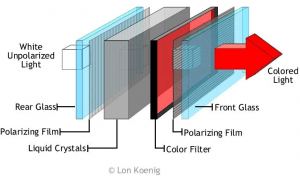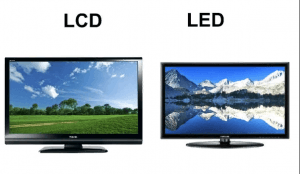Building or upgrading home theater settings rise to one major question: what kind of TV should I get? Although there are several types of televisions, there are often two types of televisions: LED and LCD televisions.
But what’s the difference? These are questions we hear from emerging home theater shoppers, but it should not. Strange acronyms. Here’s a quick answer: An LED TV is an LCD TV, but it may be surprising how the two can be confused with each other.
Once you have a better grip on LED and LCD technologies, take a look at our QLEDs and OLEDs to learn about the latest television technologies.
Technology LED and LCD:
The LCD stands for “liquid crystal display” and technically, both LED and LCD TVs are liquid crystal display. The basic technology is in the same way in which both television types are two layers of polarized glasses, through which liquid crystals both block and pass light. Therefore, LED TVs are the subclass of LCD TVs.
The longest period of human thought that matter can only exist in the three states of solid, liquid and gas. However, when Friedrich Reinitzer was discovered in 1888, we discovered a new state of matter – an intermediate state between solid and liquid. This state is called “liquid crystal.” Molecules in this state tend to retain their orientation as solids, but also have certain properties of fluid, such as liquids.

If the current is applied to a certain stage of liquid crystal, the molecules will straighten. This property of liquid crystal makes it very useful in the manufacture of liquid crystal televisions.
LED vs. LCD:
LED TVs provide better images for two basic reasons.
- First, LED TVs use color wheels or unique RGB color lights (red, green, blue) to create more realistic and vibrant colors.
- Second, light-emitting diodes can be dimmed. The dimming feature of the LED TV backlight allows the picture to be blacked while darkening the light, blocking more light through the panel. This feature does not exist on edge-lit LED televisions; however, edge-lit LED televisions can display more realistic white than fluorescent LED
| Terms | LED | LCD |
| Thickness | Thinner compared to LCD | Thicker compared to LED |
| Power consumption | Consumes less power than LCD | Consumes more power compared to LED |
| Screen Refresh Rate | Greater than LED | Less than LED |
| Screen glare | Glare is minimum | Glare is minimum |
| Running Temperature | Cool | Cool |
| Burn-in | burn-outs can occur but No burn-in occurs; | burn-outs can occur but No burn-in occurs; but |
| Dead pixels | Can occur | Can occur |
| Viewing angle | Up to 165 degrees | Up to 165 degrees |
| Contrast Ratio | 15000:1 | 15000:1 |
| Lifespan | 100,000 hours | 60,000 hours |
| Black level | Jet Black | Gray to Dark Gray |
| Weight | Lighter compared to LCD | Heavier compared to LED |
| Uses | Computer monitors, laptop screens, TV screens, and cell phone screens | Computer monitors, laptop screens, TV screens, and cell phone screens |
| Price | More expensive | Cheaper |
| Benefits | Weightless than LCD; have a longer life; more environment-friendly; lower power consumption; more reliable | Panels weigh less than plasma; use less energy; light; thinner; emits less electromagnetic radiation; no bleeding or smearing |
| Restrictions | Expensive | partial viewing angle; Slow refresh rate; blacks are brighter; liable to burn-out and image persistence; dead or stuck pixels |
Conclusion:
Know the pros and cons of LCD and LED TVs, buyers are best positioned to find the product that best suits their needs. Obviously, LED TV technology is more advanced, quality slightly better (in general), but the price is higher. LCD TVs are currently in production even with the growing popularity of their LED rivals because they offer better value at lower prices with above-average picture quality.
Please be aware that setting your new display right is the first thing you need to do before you run your movie marathon for the best results. Even state-of-the-art TV sets cannot produce stunning picture quality if set incorrectly





